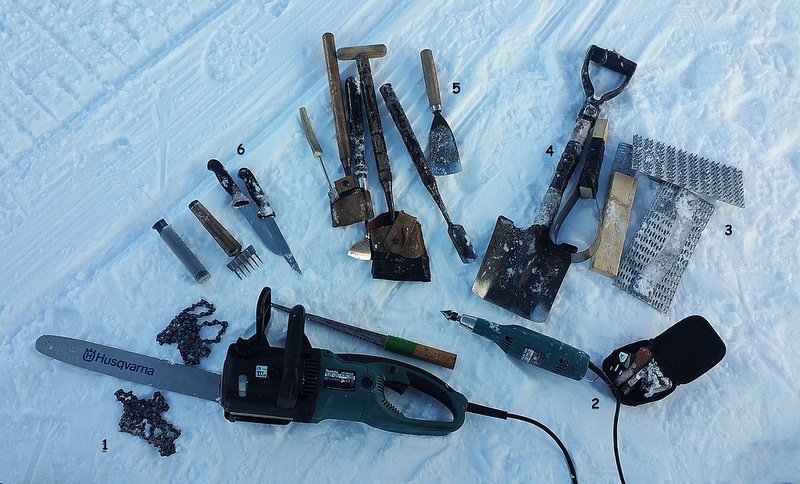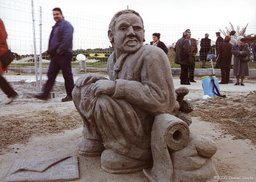
A few weeks ago I made a post about the tools I use for creating my sand sculptures. Today I wanted to share my Ice and snow toolbox for those interested.
Over the years I have tried many different tools, some made, some borrowed and some re-purposed from other uses.
Working with both ice and snow I quickly realised that in general the same tools are usable although some really shine in one or the other material. Here is what I have found to be the most productive and make up my 'go' bag for a project.
Like in the last post, let's take it form the bottom
1. Chain saw
Using an electric saw to cut water may not seem the safest thing to use but in all my years I have never gotten one shock (touch wood). If you are working in temperature below -36c you don't want to be trying to pull start a petrol saw. With electric you pick it up and press the button and off you go. All water is turned to a solid anyway and with good rubber gloves the sparks don't usually fly. Although these are built for wood, ice and snow is mostly softer (except when at very low temperatures where ice can get like Limestone) I always carry a spare chain and modify it to cut more aggressively by removing the rackers infront of the teeth.
2. Die grinder
This is just a big Dremil, a sort of drill, I use a collection of different bits which along me to grind away the ice/snow, make holes and add surface textures. In the photo the grinder has a V bit for making V shaped lines and on the right are my different bits.
3. Rasps
Mainly used for snow, these help with flattening surfaces. They are like a board with many nails poking out
4. Shovel
This is one I customized for use in sand but find it great for snow also. The sand has made it nice and sharp so it takes nice big chunks of snow away with each dig.
5. Chisels
I have a collection of chisels of different sizes and different profiles. Flat, gouge and V are a good selection be also ones with comb like profiles are good for doing organic objects as they allow for riding over the surface and keeping curves. One thing I'll say about chisels is that they have to be razor sharp, more so than for wood. I use felt mops to polish the blades up to a point that if you touch them they would cut you. It's a skill that takes lots of practice and patience. As they say ' If you have the right tool, the work is half done' I carry twice as many so I don't have to work at all.
6. Knives
These are cheap Chinese serrated kitchen knives and wonderful for carving snow and resolving ice sculptures. they have a raspy quality which makes for nice surface detailing.
Bonus tools
Beside the knives I have a pronged ice pick which I use sometimes for getting ride of large areas of ice and for surface texturing. and next to that a syringe which I use for squirting water into joints I'm making. Gluing ice with water is very cool, literally. However you have to be careful that it's temperature is as close to 0c as possible or the temperature difference can shatter the ice.
Of course these are not everything I use as I am always on the lookout for new gadgets and sharp things to cut the material. If you have any suggests or would like to know more details about anything let me know in the comments.

This is a sneek peak of one of my rooms in the Iglu-Dorf hotel Davos 2017. At €700 a night I hope it's worth it

Ps
Thanks for reading and to all my Followers a very happy New year to be. I hope someone found this useful, For me it's good to have this kind of references online to direct people to. If you want to check out some of my other posts please click below or browse my blog.

Tools of the trade- sand sculpture

El Caganer (The Shitter)- sand sculpture
Talk soon and thanks for all the support and comments.
@ammonite
